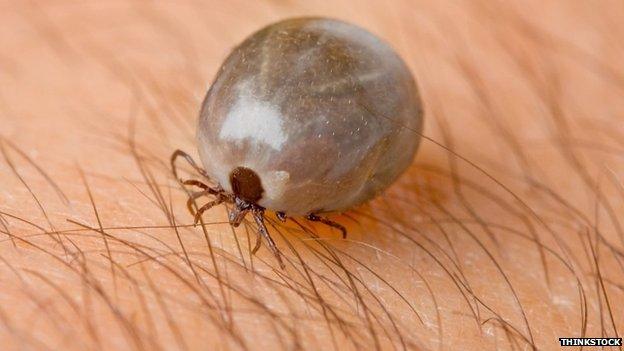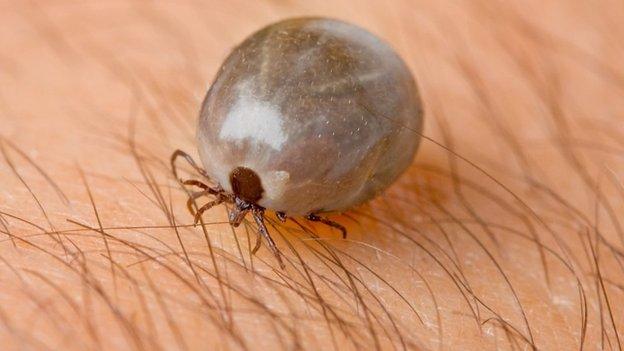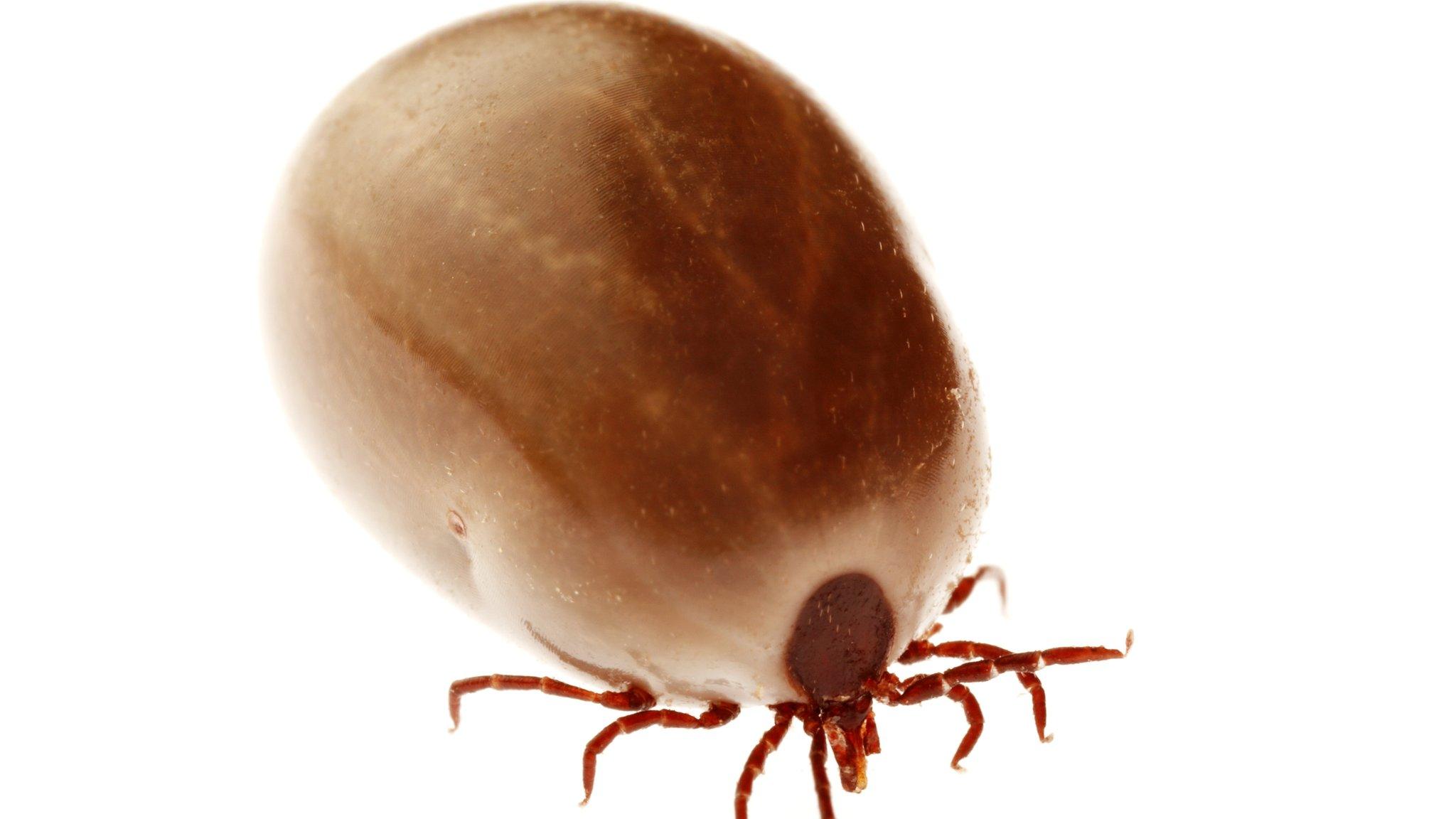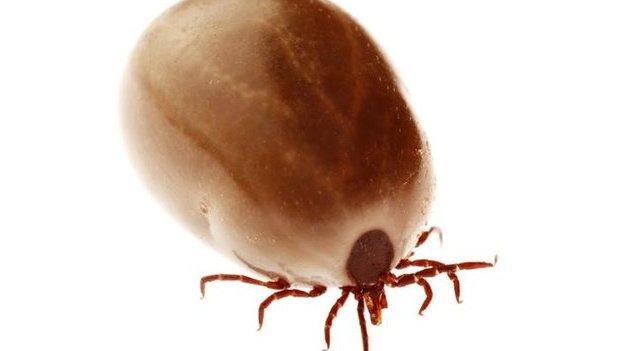Tick warning issued by health experts at Porton Down
- Published

Tick numbers and the incidence of related ailments such as Lyme disease have increased over the past 10 years
People are being warned by Wiltshire health experts to take extra precautions against ticks.
It follows a major increase in cases of the tick-borne infection Lyme Disease, which has tripled over the past decade
Public Health England estimates there are up to 3,000 new cases in England and Wales each year.
Dr Jolyon Medlock, head of medical entomology at Porton Down, said: "It's important to know what ticks look like and make sure you check for ticks."
The blood-sucking parasite is common in woodland, heathland and areas where deer graze.
Dr Medlock said "ticks questing for animals" climb up vegetation and "wave their legs around" to sense "breath and movement".
"Ideally walk in the centre of paths and wear long trousers and make sure you check for ticks when you get back," he said.
'Unfed ticks'
"It's also important to know what a tick looks like. Often people say they look like a coffee bean but that's a tick that's been feeding for seven to eight days - unfed ticks look like spiders."
According to Public Health England, Lyme Disease is the most significant tick-borne infection in the UK - which if left untreated can cause chronic pain and severe fatigue.
"You often get a slowly expanding circular reddish rash, flu-like feeling, fatigue, muscle and joint pain," said Dr Medlock.
"It's important, if you've had a tick bite and you feel unwell, to tell a GP so they are aware that it might be Lyme Disease."
- Published23 April 2015

- Published13 August 2014

- Published8 May 2014

- Published2 May 2014

- Published9 July 2013

- Published21 March 2011